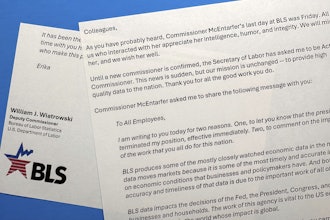
CHICAGO (PRNewswire) — The third annual A.T. Kearney survey of U.S. shoppers' local food-buying habits finds that local food has made the leap from a "hot" consumer trend to a central growth driver for grocery retailers and restaurants. Two years ago, when A.T. Kearney conducted its first study of local food-buying habits, merely offering local food was a differentiator for retailers. In 2015, participation in the local food category is table stakes and merchandising excellence in the category is critical for growth.
For this year's study, A.T. Kearney surveyed more than 1,500 U.S. shoppers who indicate they are the primary shopper or share shopping responsibility in their households. The report summarizes the findings of the study and provides retailers with specific recommendations for growing their share of the local food market.
Randy Burt, A.T. Kearney partner and co-author of the study, noted, "The 'locavore' movement has taken root. Consumers—especially women and young people—have come to expect not only high-quality local meat, seafood, and produce, but also jams, ice cream, and bread. Forward-thinking retailers and restaurants with a distinctive definition of local and a focus on marketing and merchandising fresh, high-quality products at the right price will capture a long-term advantage in this growing market."
Findings from the 2015 Local Food Consumer Shopping Survey
"Local food" has been redefined. Almost all consumers have coalesced around a stricter definition of local: Ninety-six percent now describe local food as products grown or produced within 100 miles from the point of sale—up from 58 percent in 2014.
Access to local food is no longer the primary roadblock to increasing local food sales; only 27 percent of consumers say products are not available. However, about half say they are not buying local because of a lack of clear advertising/in-store signage.
Almost all consumers (93 percent) associate local with "fresh," which is the primary purchasing factor for grocery consumers.
Regardless of the category, 78 percent of consumers are willing to pay a premium of 10 percent or more for local food, up from 70 percent in 2014.
Demand for local food is expanding beyond produce, meat, and seafood. More consumers say local is also an important attribute for prepared foods and dry groceries. For canned and jarred products, local increased in importance from 5 percent in 2014 to 13 percent in 2015; for prepared foods, the jump was from 10 percent to 23 percent; for bread, the increase was from 9 percent to 18 percent.
For a copy of the full report, "Firmly Rooted, the Local Food Market Expands," go to www.atkearney.com.
About the 2015 Local Food Consumer Shopping Survey
A.T. Kearney's online survey was conducted in May 2015 and included 1,519 U.S. respondents. Sixty percent of the respondents were women, and all were older than 18. Household, income, age, and urbanization characteristics were representative of the U.S. population as a whole.
About A.T. Kearney
A.T. Kearney is a global team of forward-thinking partners that delivers immediate impact and growing advantage for its clients. We are passionate problem solvers who excel in collaborating across borders to co-create and realize elegantly simple, practical, and sustainable results. Since 1926, we have been trusted advisors on the most mission-critical issues to the world's leading organizations across all major industries and service sectors. A.T. Kearney has 58 offices located in major business centers across 40 countries.






















